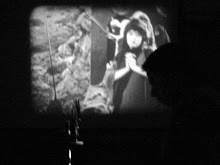Dynamics was one subject I'd always associated with Newton-Euler approach for writing the equations of motion for a system. When in the third of my bachelor's I was introduced to Lagrange's approach. Till January, 2008 I thought of them to be the only two ways of deriving the equations of motion for a dynamic system.
MAE223 changed it all. I was considering the above mentioned techniques to model spacecrafts for my PhD. But then 'multibody dynamics' happened. I'm a little over half done with the course and I've got some reasonable grasp of it. MAE223 involves using Kane's method for writing the equations of motion for a dynamic system. I don't want to write of the advantages of this technique but want to share my opinion on this approach.
Firstly, I'd love give Prof. Kane a 'pat on his back' for this technique. Most will agree with me when I say that the Newton-Euler and Lagrange's approaches are quite easy to physically understand. Without undermining these stalwarts I'd like to say their approaches were easier to observe. On the other hand, Kane's method is a little more abstract. It is a surprise that he actually thought of expressions for 'generalised active forces' and gave a physical understanding of them. To think of mathematical expressions for abstract ideas is no small feat.
Secondly, Kane's approach is very recent. It is surprising that it stands alongside Newton-Euler's and Lagrange's approaches while Kane still lives. To me it's a sign that there is still a lot to be uncovered at the fundamental level. When most engineering students, even faculty for that matter, think of research problems hardly any think of taking a problem at a fundamental level. Kane has proven this may not be a bad idea.
I'd have to add that I'm no expert in the field of dynamics. Heck! I hardly know anything. But these are just my thoughts.
Monday, February 18, 2008
Subscribe to:
Post Comments (Atom)

No comments:
Post a Comment